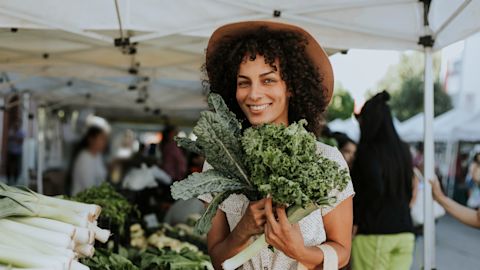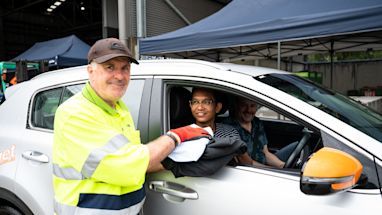When we shop for groceries, it can be easy to slip into autopilot. We know where things are, tend to buy our favourite brands and often might just be thinking about getting home for dinner.
But the small decisions we make while shopping can have a big impact on the planet.
Did you know that in Australia we churn through 1 billion plastic produce bags each year? That’s countless truckloads of raw material, energy and emissions to make something we might only use once then throw away.
By making a few simple changes when buying our groceries, we can reduce our packaging waste dramatically, doing our bit to fight landfill, pollution and climate change (and often saving us money in the process). Here are our 5 top tips for waste-wise grocery shopping.

1. Take stock and make a list before heading to the shops
Buying unnecessary food can mean extra packaging waste – and it can also lead to wasted food and cash. Take stock of the food you’ve already got and try an online platform like KitchenHand to plan creative, tasty meals with what’s in your pantry. Make a shopping list or snap a photo of the contents of your fridge and pantry for a visual reminder before heading to the shops, so you only buy what you need.
It can be easy to forget your reusable shopping bags, so make a habit of keeping some in your car, at your workplace and in your day-to-day bag. That way you’ll always have one handy when you need to dash to the shops.

2. Look for items with no packaging or better packaging
Things like apples, carrots and potatoes often come wrapped in oodles of packaging, and even when they’re not, we tend to put them in a single-use plastic bag from the roll in the supermarket. Reduce waste by skipping the plastic and putting fruit and veggies directly in your basket or trolley. Consider buying a few reusable produce bags – you can get a 3-pack for less than $2 at major supermarkets.
When it comes to those items you just can’t get without packaging, use the Australasian Recycling Label to compare products and opt for those with easily recyclable packaging. Give non-recyclable packaging a miss if you can.

3. Choose where you shop
Farmers’ markets are great places to find delicious, affordable, unpackaged food, particularly fruit, veggies and herbs. As a bonus, market produce is often locally grown with far fewer kilometres to travel to our plates, making it much more climate-friendly. Read our guide to Sydney’s markets to find one near you.
Plus, if you’re keen to take things further, try shopping at a bulk food store, where you can stock up on a whole heap of pantry staples and avoid new packaging by using your own containers.

4. Make your food go further
Making your food go further means more time between shops – that’s less packaging purchased and more cash saved in the long run.
Keep your fridge organised and set between 0°C and 5°C so your food stays safe to eat and fresher for longer. You can also keep food fresh with some simple storage hacks – check out our tips for storing fruit and veggies correctly. And if there’s anything you can't eat straight away, just pop it in the freezer to enjoy later.

5. Get rid of it right
When you’re finished with a piece of packaging, dispose of it responsibly. If you’re not sure which bin to use, check the label, use an app like Recycle Mate or our Recycling Help search tool for advice. Putting packaging in the right bin means more recycling and less landfill – and less litter in our streets and oceans
Published 25 May 2023, updated 26 June 2025



